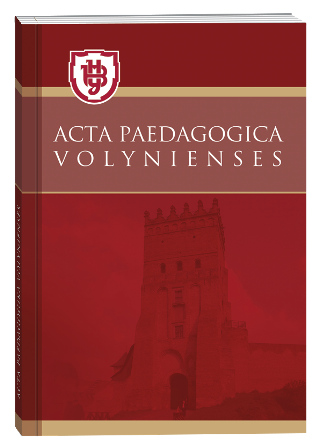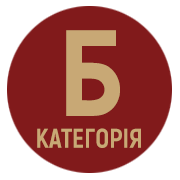MODERN ASPECTS OF AESTHETIC EDUCATION OF CHILDREN WITH DISORDERS OF INTELLECTUAL DEVELOPMENT
DOI:
https://doi.org/10.32782/apv/2023.3.13Keywords:
aesthetic education, children with intellectual disabilities, correctional psychopedagogy, mental retardation, aesthetic perception, aesthetic ideal, aesthetic judgment.Abstract
The article focuses on modern aspects of aesthetic education of persons with intellectual disabilities, which the author understands as the process of forming the ability to correctly perceive, understand, experience and appreciate the beautiful in various spheres of life and develop the ability to reproduce it in one's own activities Based on the results of the analysis of scientific sources, it was established that the aesthetic education of children with intellectual disabilities is aimed at the development and enrichment of the emotional and sensory sphere of such a child. Structural components of aesthetic education are aesthetic perception, aesthetic attitude, aesthetic feeling, aesthetic judgment, aesthetic ideal, aesthetic taste, aesthetic activity. They are determined by the mental, moral, emotional, spiritual activity of a person and lead to significant changes in his worldview, beliefs, behavior, contribute to the aesthetic activity of the individual, the development of his creative forces and abilities in accordance with the objective laws of the development of beauty. It has been established that aesthetic emotions, experiences, and a taste for beauty are formed in children throughout their stay in a special educational institution: educational and work activities, aesthetic design of everyday life, communication with nature, culture of relationships with the teacher, peers, etc. Further aesthetic development of pupils takes place in the process of artistic education, that is, with direct acquaintance with works of art (literary, visual, musical, dramatic) and participation in various types of artistic self-activity (painting, music, working with natural materials, singing, recitation, dancing). It has been proven that intellectual underdevelopment, a low level of cognitive activity, violations of the emotional and volitional sphere complicate such work. Aesthetic perception implies the presence of judgments, evaluations, and an emotional attitude to the surrounding world. Of course, this is not about the formation of full-fledged aesthetic perception in children due to intellectual development disorders. However, under the influence of corrective and educational work, it is possible to reach a certain level of correct judgments and develop a certain aesthetic sensitivity, which contains elements of aesthetic perception.
References
Кузава І. Б. Формування художньо-естетичних інтересів на уроках музики. Методичні рекомендації для вчителів початкових класів спеціальних шкіл інтенсивної педагогічної корекції. Луцьк : РВВ «Вежа». 2006.
Кузава І.Б. Мистецтво в корекції розвитку дошкільників із психофізичними вадами : навч. посіб. для студ. вищ. навч. закл. Волин. нац. ун-т ім. Л. Українки. Луцьк: Волин. нац. ун-т ім. Л. Українки, 2011. 103 с. (Серія "Посібники та підручники ВНУ ім. Лесі Українки").
Миронова С.П. Корекційна психопедагогіка. Олігофренопедагогіка. [Електронний ресурс]. Режим доступу: http://elar.kpnu.edu.ua/
Дмитрієва І.В. Корекційні функції естетичного виховання та механізм їх реалізації в старших класах допоміжної школи: автореф. дис. …д-ра пед. наук. К., 2009. 52 с.
Синьов В. М., Коберник Г. М. Основи дефектології: навчальний посібник. Київ : Вища школа, 1994. 143 с.
Синьов В.М. Корекційна психопедагогіка. Олігофренопедагогіка: Підручник. Частина І. Загальні основи корекційної психопедагогіки (олігофренопедагогіки). К.: Вид-во НПУ імені М.П.Драгоманова, 2007. 238 с.







